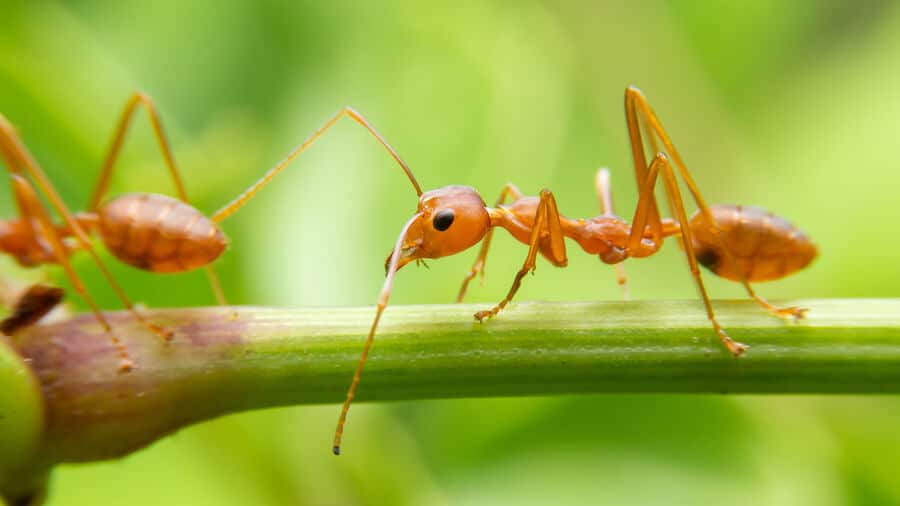Finding lines of ants marching across your kitchen counters can feel like a small invasion. These determined pests follow invisible scent paths laid down by their colony mates, which are chemical trails that lead directly from food sources back to the nest. Cleaning up the visible trail is only part of the solution. If the pheromone path remains, ants will keep coming back.
This article explains how ants communicate through scent trails, where these trails are likely to form, and the expert-backed steps you can take to break them for good.

How Ant Trails Actually Work
Ants use chemical signals called pheromones to navigate and recruit others to resources. When a scout ant finds food, it leaves a scent trail on the way back to the colony. This trail becomes stronger as more ants travel the route, reinforcing it with every pass. What starts as a single forager can quickly become hundreds following the same path with precision.
These scent trails are especially resilient indoors. Smooth kitchen surfaces like countertops, floors, and baseboards can hold pheromone residue for days. Even if you kill the ants you see, the trail remains active and will continue to guide others unless fully removed.
Common Areas Where Ant Trails Form
Ant trails in kitchens often appear suddenly, but are the result of specific environmental cues that draw ants inside. Knowing where to look can help you interrupt the pattern before it escalates into a full infestation.
- Along baseboards and backsplash edges: These low-traffic zones give ants easy travel routes without disruption.
- Near sinks, trash bins, and food storage areas: Crumbs, moisture, and odors draw foragers to these high-reward zones.
- Under appliances: The warmth and shelter behind ovens, refrigerators, and dishwashers are ideal for travel and nesting.
- Window sills and door frames: These access points often serve as entryways from the outside, especially during warmer months.
If you’ve recently experienced wet weather, ants may also move indoors seeking dry ground. You can read more about how heavy rainfall affects pests and why it often increases indoor ant activity.
How to Break the Scent Trail
Eliminating an ant trail requires more than wiping down surfaces with water or a basic cleaner. The pheromone residue is persistent and requires targeted cleaning. Here’s how to do it right:
- Use vinegar or citrus-based cleaners: These break down pheromone chemicals better than mild detergents or soap.
- Clean several feet beyond the visible trail: Scent paths often extend farther than what’s immediately visible.
- Repeat the cleaning multiple times a day: Reinforcement occurs as ants walk the same route repeatedly.
- Dispose of food waste immediately: Even tiny crumbs can attract scouts and start the cycle again.
You can remove ants one by one, but if the trail isn’t erased, the colony will continue to send replacements. Blocking access to the food source is equally critical.
When Ant Activity Signals a Bigger Problem
Not all ant infestations are equal. Occasional visitors might indicate a nearby nest outdoors. But persistent indoor trails, large numbers of ants, or trails that reappear in the same location often signal something more serious. Here are signs to watch for:
- Trails that return within a day or two, even after cleaning
- Ant activity near structural wood, especially damp or damaged wood
- Presence of sawdust or hollow-sounding surfaces, which could suggest carpenter ants
- Visible ants in multiple rooms or floors of the house
Carpenter ants are a particular concern in Michigan homes. They don’t just forage for food, they tunnel through wood to build nests, which can cause serious damage over time. If you suspect this species is involved, read this guide on the damage carpenter ants cause to understand what to look for.
Why Professional Help Is More Effective
It’s tempting to rely on ant baits or sprays to handle the problem, but these quick fixes often miss the root of the issue. DIY treatments may temporarily reduce ant activity, but they don’t remove scent trails or target the nest effectively.
Professional pest control offers several advantages:
- Precise identification: Not all ants respond to the same treatments. Experts can determine the species and behavior.
- Thorough inspections: Technicians trace trails to their entry points and locate nests, whether inside or outside the home.
- Safe, targeted solutions: Professionals use products that disrupt pheromone trails and eliminate colonies at the source.
In most cases, especially when ants are recurring or present in large numbers, professional intervention is the most reliable way to regain control and prevent future infestations.
Don’t Let Ants Rule Your Kitchen
The longer an ant trail is left untreated, the stronger it becomes. Break the pattern with the right techniques, and if ants keep coming back, call in the experts. Contact Prevent Pests for a thorough, effective approach to ant control that goes beyond the surface.

